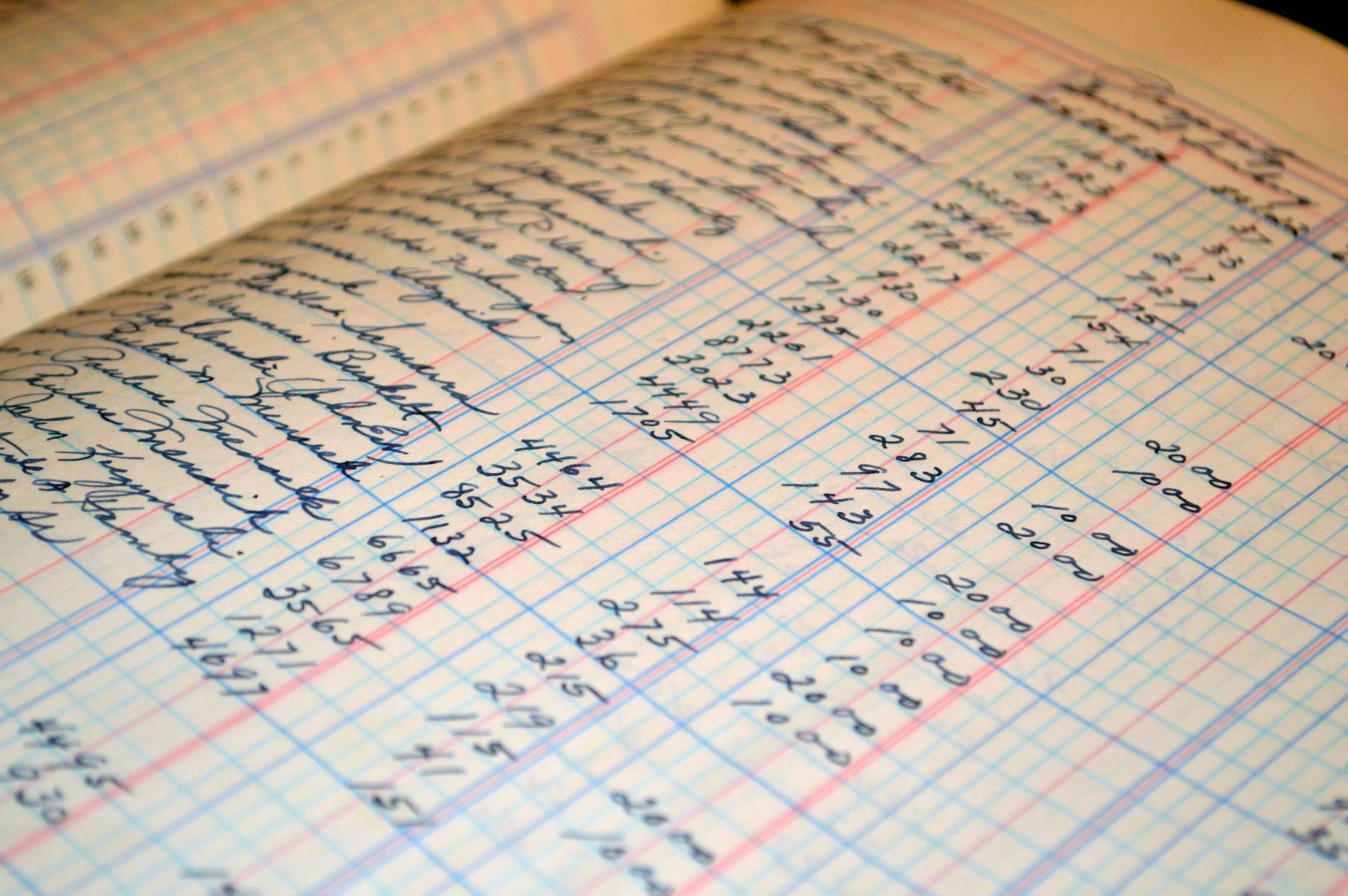Escrow is the safe middle ground in a real estate deal. Once your offer is accepted, a neutral third party steps in to hold money and key documents until every detail is squared away. This helps protect buyers and sellers while the sale moves forward.
From getting the offer accepted to handing over the keys, escrow keeps the process fair and organized. Over the next few steps, you’ll see how escrow tracks progress, makes sure rules are followed, and clears the path to a smooth closing. Knowing how escrow works can help you avoid surprises and make sure your home sale or purchase finishes strong.
What Is Escrow in Real Estate?
Escrow acts like a safety box in real estate. It’s a process that starts the moment your offer gets accepted and keeps everything on track until closing day. The goal is to make sure that both the buyer and the seller do what they promised, so there are no surprises or last-minute problems. Everything is managed by a neutral third party who sits right in the middle, holding money and paperwork until all the right steps are finished.
 Photo by Ivan Samkov
Photo by Ivan Samkov
Defining Escrow
Escrow is an arrangement where a neutral third party, called an escrow agent or company, holds onto funds and documents involved in a home sale. This isn’t the buyer’s real estate agent or the seller’s—escrow is completely separate to keep things fair for everyone.
Think of escrow as a safety referee who makes sure no one runs off with the money or title until every box is checked. This middleman handles everything from earnest money deposits to loan documents, keeping them in a secure account until it’s time for the house to officially change hands.
The Role of the Escrow Agent or Company
The escrow agent or company manages several moving parts in the sale:
- Collects and holds important items like the buyer’s earnest money, loan funds, and paperwork
- Checks that all contract conditions are met, such as home inspections, repairs, and clear title searches
- Distributes payments and documents only once both sides fulfill their promises
You can imagine the escrow agent as a traffic controller making sure each car (buyer, seller, lender) gets where they need to go without a fender-bender. They’re trained to spot mistakes, prevent misunderstandings, and solve issues before they turn into full-blown roadblocks.
Why Escrow Exists in Property Transactions
People rely on escrow to make deals safer. Here’s why the system matters:
- Prevents fraud: No single party controls both the money and property, lowering the risk for everyone.
- Protects deposits: The buyer’s money isn’t handed over to the seller until all contract terms are met.
- Ensures fairness: If either side backs out or misses a requirement, the escrow agent follows the contract directions about what happens next.
- Organizes the process: Deadlines and documents are tracked in one place, so nothing slips through the cracks.
Escrow brings peace of mind. Buyers know their money and paperwork are safe, and sellers know they won’t hand over the keys until they actually get paid. The process turns the chaos of a home sale into a step-by-step path, with guardrails on both sides to keep things steady.
Opening Escrow: From Accepted Offer to Initial Deposit
The moment your home offer is accepted, the process shifts gears from agreement to action. Escrow “opens” when a neutral third-party (usually a title or escrow company) receives key documents and your earnest money deposit. Everything gets tracked, protected, and double-checked so that no one gets short-changed. Here’s how things play out at this early, crucial stage.
The Purpose of Earnest Money: What It Is and How Escrow Protects It
When a seller accepts your offer, you’re expected to show you’re serious. Enter earnest money—a good faith deposit (usually 1–3% of the purchase price) that proves your commitment.
- Earnest money acts as a promise: If you back out without cause, the seller gets to keep this money. If you follow all the steps and close, the amount is applied to your down payment or closing costs.
- Where is it held?: You don’t hand this check to the seller. Instead, your agent delivers it to an escrow company or law firm. They lock it in a secure, separate account for safekeeping.
- When is it due?: Right after offer acceptance, typically within three business days. The specific timeline will be in your contract.
Escrow manages the rules for this deposit. If contingencies—like passing inspections or securing financing—aren’t met and you cancel the deal for a valid reason, escrow returns the deposit. If not, escrow distributes the money according to the contract. Both buyer and seller can relax, knowing there’s a fair playbook.
The Role of the Escrow Officer or Company
 Photo by Ketut Subiyanto
Photo by Ketut Subiyanto
Once escrow opens, the escrow officer (or company) becomes the go-to middleman for your transaction. This expert coordinates the many moving parts that need to happen between accepted offer and closing:
- Receives and holds earnest money and other funds safely
- Tracks all deadlines for deposits, disclosures, and inspections
- Maintains records of everything that passes through their “hands” (deposits, documents, instructions)
- Confirms that contract terms are met before money or documents change hands
- Communicates with everyone: buyer, seller, agents, and lenders
Think of your escrow officer as the traffic controller. They direct the flow, check everyone’s paperwork, and make sure no shortcuts happen. Their focus is fairness—they don’t take sides and they strictly follow the instructions set by the purchase contract. If a dispute pops up, escrow freezes the action until both parties agree on a solution.
A strong, organized escrow company can make a stressful time feel much smoother, ensuring everything stays on track without nasty surprises. Their daily goal: keep money and documents safe, everyone honest, and the sale marching toward the finish line.
Key Steps in the Escrow Process
The heart of the escrow process is making sure every promise in the contract gets checked off—on time. After the earnest money lands in escrow, a series of steps and deadlines take over. This is where inspections, disclosures, approvals, and paperwork all come together for a successful close. Here are the key steps to watch for in this window between offer acceptance and getting your keys.
Property Inspections and Disclosures
Most buyers start escrow by ordering a home inspection, which usually happens in the first week or two. Home inspections look for big-ticket issues like foundation cracks, old roofs, wiring, plumbing, and even pest problems. Common inspections include:
- General home inspection: Looks at the house top to bottom, including HVAC, roof, structure, and appliances.
- Pest inspection: Checks for termites or other wood-destroying pests.
- Specialized inspections: May cover mold, asbestos, lead paint, chimney, pool, or septic system, depending on the property.
California and many other states require sellers to give buyers written disclosures about known issues, past repairs, and even neighborhood noise or flood zones. Buyers have the right to review inspection reports and disclosures, usually within a tight inspection contingency period (7–17 days is common).
If inspections reveal big problems, buyers can often ask for repairs, a credit at closing, or in some cases, cancel the sale with their deposit returned. Sellers must be honest in disclosures—hiding problems can lead to serious legal trouble down the line.
Appraisals and Mortgage Approval
After inspections, the lender orders an independent appraisal. The goal: confirm that the property is worth at least as much as the accepted offer. The appraiser visits the home, looks at recent local sales, and writes a report on fair value.
What if the appraisal comes in below the purchase price? Buyers and sellers need to negotiate a solution: lower the price, bring in more cash, or even walk away if the contract allows.
Final mortgage approval—known as “clear to close”—only happens once:
- The appraisal matches or exceeds the sale price
- The buyer’s finances and credit check out
- The lender receives all requested documents, including title and insurance paperwork
The loan approval timeline depends on how quickly buyers respond to requests and how complex their situation is. Once approved, closing is just a few steps away.
Title Search and Insurance
 Photo by Ivan Samkov
Photo by Ivan Samkov
A smooth closing depends on a clean title. The escrow or title company orders a full title search, digging through public records for old liens, unpaid taxes, disputes, or mistakes in past sales.
- Title defects can include: unpaid mortgages, contractor liens, missed transfers, or boundary problems
- If anything pops up, escrow alerts everyone. The seller must resolve any title issues before closing.
Title insurance is then issued. The policy protects the buyer and lender from surprise claims later—like someone else coming forward claiming they own the home or a long-lost loan popping up. Title insurance is usually a one-time fee paid at closing.
Homeowners Insurance and Other Documentation
Before the deal can close, buyers must secure homeowners insurance. Lenders want proof that the home is protected from fires, storms, and accidents. The policy must be in effect by closing day and often needs the lender named as a policyholder.
Other important documents are handled during this time, including:
- Final loan application forms for the buyer to sign
- Proof of identity from buyers and sellers
- Settlement statements listing every fee and payment in the sale
- Any required city or state transfer forms, retrofits, or warranties
All of these documents must be in the escrow file, triple-checked and ready for signatures, to keep the closing on schedule.
By tracking these key milestones, the escrow process guards buyers and sellers from common pitfalls and gives both sides clarity about where things stand. Each step is a chance to spot errors, negotiate fixes, and reach the finish line with confidence.
Closing Escrow: Final Steps to Ownership Transfer
After weeks of preparation, you’re finally nearing the finish line. Closing escrow is when the details all come together and ownership changes hands. For buyers and sellers, this stage can feel like a relay handoff—each party must finish strong so the baton lands perfectly. Here’s what to expect as you check closing disclosures, do your final walkthrough, sign key paperwork, and receive confirmation that the property is officially yours.
Reviewing Closing Disclosures and Final Walkthrough
The days right before closing are all about double-checking. The goal is simple: you want no surprises.
Closing Disclosures
Your lender must give you a Closing Disclosure at least three business days before closing. This important document lists every detail about your loan and all costs for the sale.
- Interest rate and final loan amount
- Monthly payment including taxes and insurance
- Full breakdown of closing costs: lender fees, escrow costs, appraisal, title, and prepaids
- Cash needed to close: the exact amount you must bring to finish the deal
Compare the numbers with your earlier Loan Estimate. Ask your lender immediately about any fees you don’t recognize, sudden rate changes, or unexpected costs like prepayment penalties.
Final Walkthrough
This step happens 24 to 48 hours before closing. The final walkthrough is your chance to check:
- Repairs or credits agreed upon after inspection are done and look professional
- Appliances, fixtures, and extras included in the sale are present and working
- Plumbing, electrical, heat/AC work as they should
- No new damage or leftover junk
- All personal items belonging to sellers are cleared out
Take your repair receipts, contract, and a checklist with you. Test faucets, lights, toilets, and any alarms. Turn on every appliance. You want to walk into your new home on closing day ready to unpack, not chase missing items or surprise repairs.
Signing Documents and Fund Disbursement
 Photo by RDNE Stock project
Photo by RDNE Stock project
The closing appointment is paperwork central. Both buyer and seller (and sometimes their real estate agents) meet to sign the final forms.
Key Documents You’ll Sign:
- Deed of trust or mortgage (ties the home to your loan)
- Promissory note (your personal promise to repay the lender)
- Closing Disclosure (your final review and acceptance)
- Settlement statement (details every dollar in and out)
- Deed (transfers legal ownership)
- Other local or lender forms
You’ll need government-issued photo ID, proof of homeowner’s insurance, and the method (often a wire transfer or cashier’s check) to pay your closing costs.
Distributing the Funds:
- Your down payment and loan funds go into escrow.
- The escrow agent pays off any liens, the seller’s mortgage, commissions, and covers title and recording fees.
- The seller receives their proceeds after all payoffs and costs.
Only after every signature, every payment, and a final title check is the sale official. The escrow company records the deed with the county and notifies everyone the deal is done. Then, the keys are yours and you can truly celebrate new homeownership.
After Closing: The Mortgage Escrow Account
Once your home closes and you get your keys, the work of escrow isn’t over. Now, your mortgage servicer creates a new kind of escrow account that quietly works in the background month after month. This account, often called a mortgage escrow or impound account, is your home’s budget organizer, making sure property taxes and insurance are paid on time, every time.
 Photo by Pixabay
Photo by Pixabay
How the Post-Closing Escrow Account Works
Right after closing, your lender collects a deposit to “seed” the escrow account. This upfront reserve typically covers several months of property taxes and insurance premiums, based on the timing of when those bills are due. The goal is simple: keep enough money available so taxes and insurance never risk being unpaid or late.
From your very first monthly mortgage payment, you’ll notice escrow is built right in. Instead of paying taxes and insurance bills yourself each year, you send small “installments” along with your monthly payment. The lender holds those funds, tracks due dates, and mails payments directly to the tax office and your insurance company when the time comes.
What’s Included in Your Monthly Mortgage Payment
Your lender typically drafts one monthly payment that covers several different things:
- Principal: The actual loan balance you’re paying down over time.
- Interest: The cost charged by your lender for borrowing money.
- Escrow Account: A set portion for property taxes, homeowners insurance, and, if required, mortgage insurance.
Most statements break these out line-by-line, making it easy to see exactly where your money is going. You might hear the phrase “PITI,” which stands for Principal, Interest, Taxes, and Insurance—these are the building blocks of most mortgage payments.
Annual Escrow Statements and Account Adjustments
Once a year, your mortgage company reviews your escrow account in a process called escrow analysis. You’ll receive an annual escrow statement showing:
- All deposits paid into escrow throughout the year
- All disbursements for taxes and insurance
- The projected balance for the next year
- Any shortages (if costs went up)
- Any surplus (if you overpaid)
If your taxes or insurance rates increase, your mortgage company will bump up your monthly escrow payment to cover the new amount. If there’s a surplus—maybe tax rates dropped or you overestimated costs—you may get a refund. Some lenders offer an option to pay shortages in one lump sum or spread it out over the coming year to make budgeting easier.
What Happens When You Reach Certain Equity Levels
After you’ve paid your mortgage down and built up 20% or more home equity, your lender may offer you a choice: keep the escrow account, or manage taxes and insurance yourself. This isn’t automatic—some lenders require you to keep it even with lots of equity, depending on your loan agreement and payment history.
Choosing to pay your own taxes and insurance gives you more control but also puts the responsibility squarely in your hands. If you’re comfortable with paperwork and deadlines, it can feel like a graduation. If not, leaving the escrow in place means fewer bills to worry about.
Why Mortgage Escrow Matters
Here’s the value of post-closing escrow in everyday terms:
- Your taxes won’t accidentally be missed or go unpaid.
- Insurance premiums are always on time, protecting your home and your lender’s interests.
- Big bills are broken up into manageable monthly pieces.
By automatically handling taxes and insurance, escrow helps prevent costly mistakes and keeps homeownership predictable—no surprise tax notices, no risk of lost coverage, and no late penalties.
Conclusion
Escrow acts as a shield, protecting both buyers and sellers in a home sale. By placing money and key documents with a neutral expert, everyone moves forward with confidence. Sticking to timelines, sharing updates, and double-checking each step helps avoid surprises that can slow things down.
If you ever feel unsure, reach out to your escrow officer or real estate agent for answers—they’re there to guide you at each stage. Staying in close touch and asking questions makes the process smoother and less stressful.
Thanks for reading! Share your escrow stories or tips below, and keep an eye out for future guides on making every real estate step stress-free.



